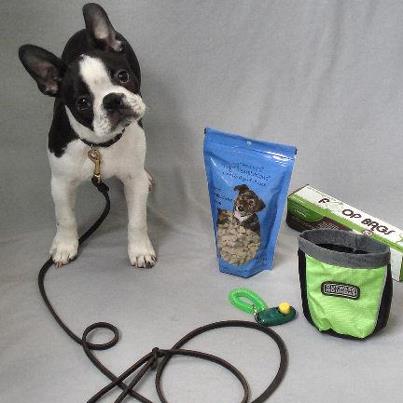End of Session

This week marks the end of the first session of in-person dog training classes in 18 months. Our Beginner students have come so far, and we’re so proud of them. We developed this list of Top 10 Tips for dog training to remind them of things we’ve worked on. It’s hard to take notes when you’re supposed to be paying attention to your dog!
The Top 10:
- Focus on your dog for the entire training session. Your dog gets all your attention the entire time. Just as you don’t want your dog to misbehave, you don’t want to miss any “good stuff” that should be rewarded. If “good” looks the same as “naughty,” the devil will win every time.
- Keep it short, fast, and fun. Dog training isn’t an endurance event. Both your and your dog’s attention spans are limited. (See #1.) That’s why we call it 2-Minute-Training. Two minutes at a time may be too short – but 15 minutes is too long for most dogs. Neither one of you can or should maintain intense focus for that long.
- Ignore the stuff you don’t like. The more attention you pay to barking, mouthing, jumping, biting, etc. the more your dog will do it. Your dog thinks you’re playing the game. Dogs don’t distinguish between “bad” and “good” attention. They just know you’re engaging with them, which they love.
- Pay your dog. Every single time. Especially when they’re just learning. If you worry about your dog getting fat from an abundance of treats – use their meals as training treats. There’s nothing special about dog food in a bowl. Dog food from your hand makes it very special! (You might enjoy the article about your dog’s reward bank.)
- When you are in motion with your dog, always reward from the hand closest to the dog. If your dog crosses in front of you to get the treat, they will trip you. It will hurt.
- Do not repeat commands. If your dog doesn’t understand “Sit!,” they’re not going to understand “sit, sit, sit, Sit, SIt, SIT, SIT!” If they don’t do it the first time, either you don’t have the dog’s attention, or the dog doesn’t understand the word.
- Build your dog’s vocabulary. Dogs are capable of understanding hundreds of words. Your job is to teach those words. When you are teaching a new word, like “bed!,” stand by the bed, look at the bed, and when the dog shows interest in the bed say “good bed!” and throw a treat in the bed. Repeating the word pairs the object (or action) with its name. Infants learn language through constant repetition, even before they’re verbal. Dogs can learn the same way.
- If you’re in a bad mood, angry with your dog, frustrated, or cranky it’s not a good time for a training session. The only exception is if training your dog is your happy place and you can put everything else aside for the 2-Minute session.
- There’s no such thing as too many training sessions. If you want to play training games with your dog for two minutes every hour – go for it! More is better in this case. Try to get in at least one or two sessions every day. If you don’t have two minutes to play with your dog most days, you shouldn’t have a dog.
- Don’t hurt your dog. There’s no popping the leash, pushing on hips, choking of dogs in positive reinforcement training. We are teaching our dogs how to make good choices. Dogs should approach every training game session with joy and anticipation. Tails should be wagging.
Bonus: Beginner Training Games:
- Walk With Me! (with automatic sit when you stop) (Book 3: Let’s Go for a Walk)
- Touch
- Place (Bed) (Book 1: Clicker and Place)
- Puppy Push-ups (sit, down, sit, down) (The 2-Minute Tip “Even Finicky Dogs Work for Food” describes this fun game.)
- Whatcha Gonna Do? (Book 4: Impulse Control)
- Get it/Leave it (A fun game in a 2-Minute Tip from just a couple of weeks ago)
- Recall (Come!) (Book 2:Come!)
